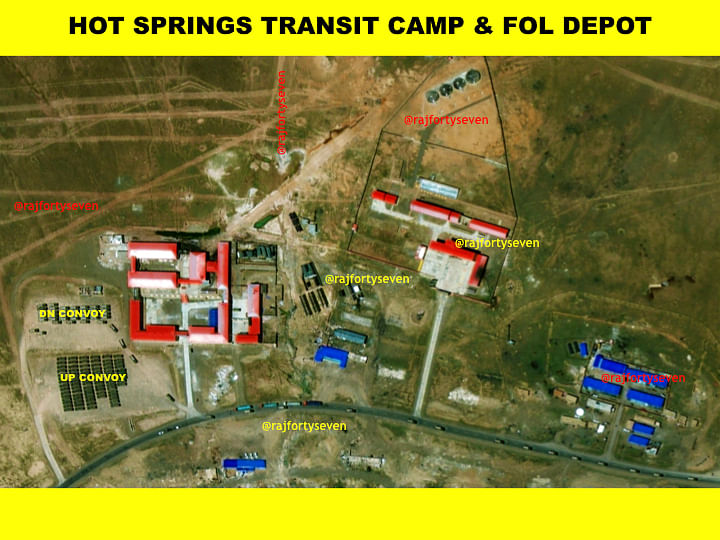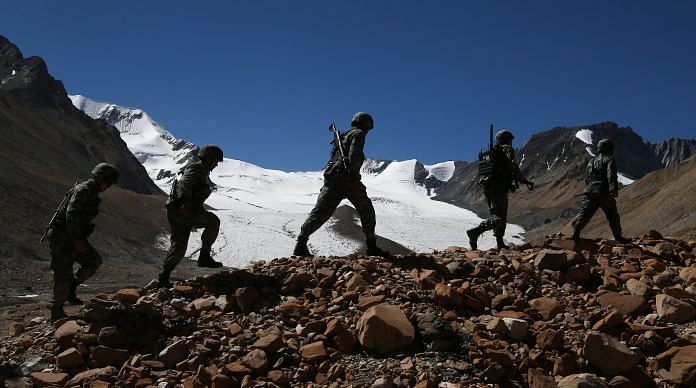The PLA is now trying to modernise its theatre-level distribution and integrate it with the supply chain. On-ground trials have been conducted.
New Delhi: China seems to have learnt a few lessons from last year’s standoff with India at the Doklam plateau. There seems to be a realisation that the People’s Liberation Army (PLA) needs to change its outmoded logistics and supply systems in the tough terrain of the Tibet Autonomous Region.
For any military, an effective supply chain and distribution management environment are key ingredients to a successful operation, and these problems are magnified in areas like the Himalayas or the Tibetan plateau, the highest mountain range and the area of highest average elevation on earth respectively.
So, the PLA is now trying to modernise its theatre-level distribution and integrate it with the supply chain. Although automation and artificial intelligence (AI) are vital in today’s fast pace of warfare, actual on-ground trials are needed to verify timelines and validate concepts and operationalise plans.
Also read: These images show how strongly China has Sri Lanka in its grip
ThePrint provides an analysis of ground-level movement of PLA supplies through satellite imagery.
Route recce
In keeping with fundamentals of maintaining combat capabilities, China in the last one year has carried out logistics exercises specially designed for transport units from neighbouring regions. Basic route recces have been carried out on three major axes, to assess the fuel, loads, night halts and other administrative and maintenance requirements for convoys travelling on these routes.
The first was during the month of July 2017 — at the beginning of the Doklam standoff. China’s PLA carried out combat drills to ensure large scale military hardware could be moved easily into the Tibetan plateau simultaneously through Qinghai-Tibet (Golmud-Lhasa) railway and road.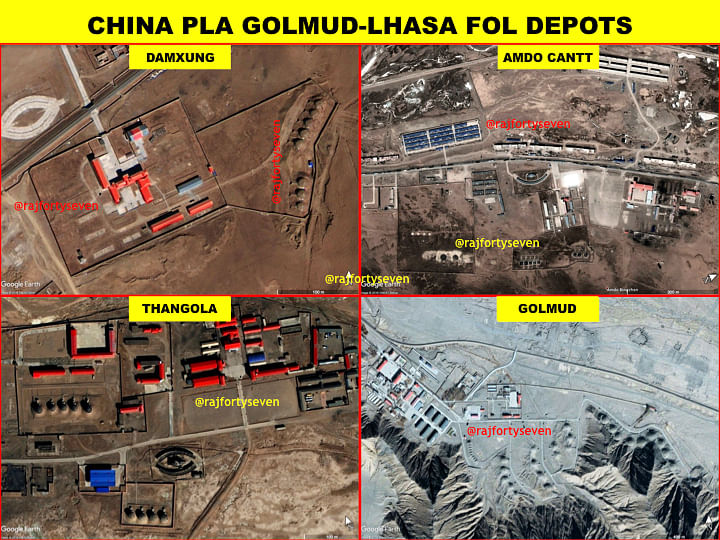
The second was carried out in the month of March 2018, to test transportation needs during snowfall. A convoy of more than 100 large trucks was geolocated on Google Earth imagery to the town of Rawok on Chengdu-Nyingchi route.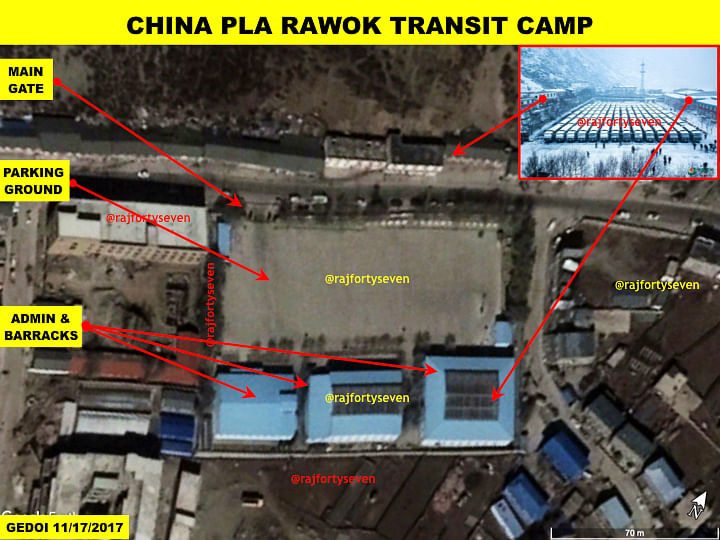
The third route was reconnoitred more recently, on 9 September, from Kashgar to Ngari. Pictures of the convoy move appeared on the Chinese ministry of defence site, covering the most hairpinned climbs enroute. It was geolocated to 36 34 35N, 77 00 42E.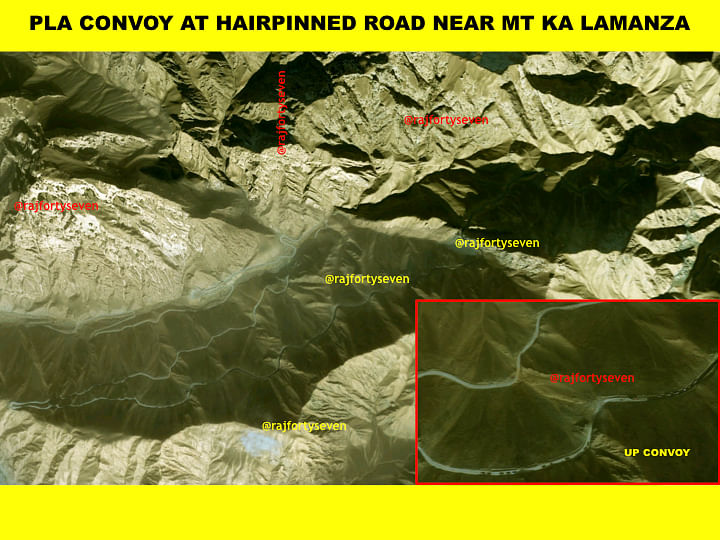
Dispersed routes
The three routes contemplated for supply chain maintenance are very well dispersed, covering about 2,000 km — virtually all of Tibet.
These three routes can provide logistics cover to all major towns and cities, and are also well connected to all PLA posts in the Tibet Military District.
The convoys can cover the routes in 48 hours’s actual travelling time — about four to five days’ journey time. It will be difficult to interdict convoys on these routes, especially because they will have the support of People’s Liberation Army Air Force.
Infrastructure development
Over the last decade or so, China has made tremendous infrastructure developments along these three major arteries feeding the PLA in the Tibetan plateau.
Transport regiments: The three towns of Kashgar, Golmud and Chengdu have transport regiments assigned for the task. These three regiments, with more than 300 vehicles each, complement the railway transhipments.
Railway stations: The railway route covers only the central axis from Golmud to Lhasa. Importance has been laid on dual-use railway stations, catering to loading ramps. Every station has proper gantry cranes to unload heavy loads. Small stations like Nagchu cater to unload more than 20 trains at a time.
Latest satellite imagery on Google Earth shows 17 trains at Nagchu railway station and one awaiting signal outside the station.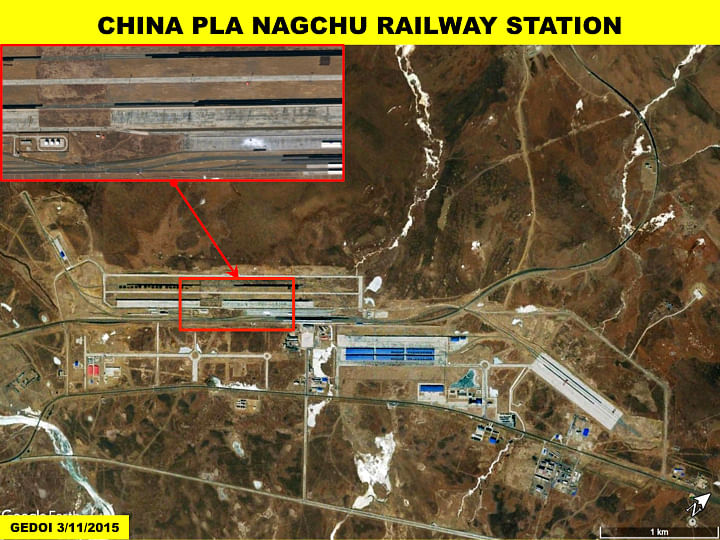
Tibet’s capial Lhasa, which was a small station, has been developed into a large junction with three separate stations.
Also read: This is what China is doing to protect its nuclear weapons
FOL and ammunition depots: A number of fuel, oil and lubricants (FOL) depots and ammunition depots are needed to cater for these three routes. But major FOL depots have only been observed on the central axis; none have been identified on the other two routes.